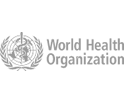Each year, waterborne diseases afflict hundreds of millions of people, primarily those living without safe, accessible water in developing countries.
Of the seven most common waterborne diseases in the world, diarrhoea is the central symptom. The ...
Want to see the rest of this article?
Would you like to see the rest of this article and all the other benefits that Issues Online can provide with?
- Useful related articles
- Video and multimedia references
- Statistical information and reference material
- Glossary of terms
- Key Facts and figures
- Related assignments
- Resource material and websites

 Seven common waterborne diseases (and how to prevent them)
Seven common waterborne diseases (and how to prevent them)








